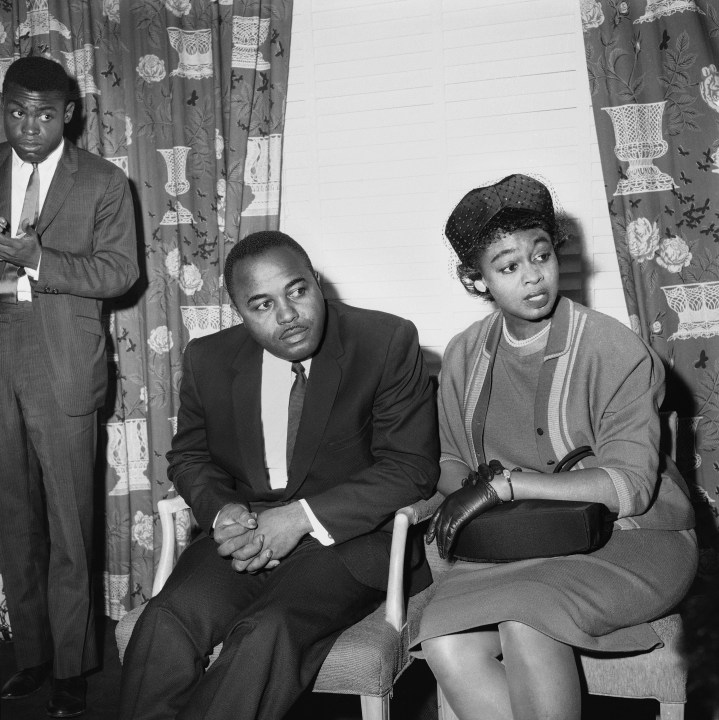Last parent of a child killed in 1963 church bombing dies

FILE – President Barack Obama signs a bill designating the Congressional Gold Medal commemorating the lives of the four young girls killed in the 16th Street Baptist Church Bombing of 1963, Friday, May 24, 2013, in the Oval Office of the White House. Standing, from left are Rep. Terri Sewell, D-Ala., and Lisa McNair. Seated at right is Thelma “Maxine” Pippen McNair, the mother of Denise McNair. Maxine McNair, the last living parent of any of the children killed in the 1963 bombing of Birmingham’s 16th Street Baptist Church, died Sunday, Jan. 2, 2022. She was 93. (AP Photo/Jacquelyn Martin, File)
BIRMINGHAM, Ala. (AP) — The last living parent of any of the four Black girls killed in the 1963 Alabama church bombing died Sunday. She was 93.
Maxine McNair’s family announced her death in a news release. A cause of death was not given.
McNair’s daughter, 11-year-old Denise McNair, was the youngest girl killed in the bombing of Birmingham’s 16th Street Baptist Church, the deadliest single attack of the civil rights movement. Also killed were three 14-year-olds: Addie Mae Collins, Carole Rosamond Robertson and Cynthia Dionne Wesley.
Three members of the Ku Klux Klan were eventually convicted in the case, the first in 1977 and two more in the early 2000s.
Maxine McNair worked as a teacher for 33 years in the Birmingham public school system. Her daughter, Lisa McNair, said she changed many lives through education and left a lasting legacy through the students she touched.
“Mrs. McNair was an amazing wife and mother and as a teacher of 33 years in the Birmingham public school system imparted knowledge in the lives of hundreds. We are going to miss her laughter and her humor. The family would appreciate all of your thoughts and prayers,” the family’s statement said.

Maxine McNair’s husband, Chris McNair, died in 2019 at the age of 93. He was one of the first Black members of the Alabama legislature since Reconstruction, and a Jefferson County commissioner.
Funeral arrangements for a celebration of Maxine McNair’s life are pending.
Denise McNair was one of five girls who had gathered in a downstairs bathroom at the 16th Street Baptist Church on Sept. 15, 1963, when a timed bomb planted by KKK members went off outside under a set of stairs.
The fifth girl, Sarah Collins Rudolph, was blinded in one eye by the blast. She later provided testimony that helped lead to the convictions of the men accused of planting the bomb.
The church bombing came during the height of the fight for civil rights in America, and as Birmingham’s public schools were being desegregated. The four girls became emblems of the racist hatred that emanated from much of the opposition to equal rights.














